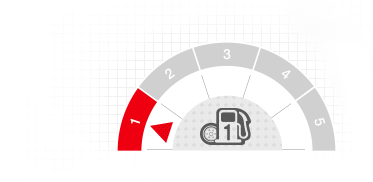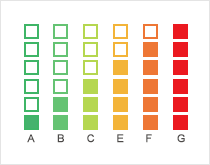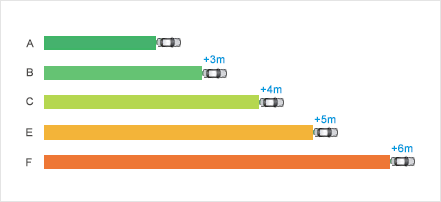EU Labeling Regulation

- Smart tires that calculate fuel efficiency
- Energy efficiency grades of various Kumho Tire’s products can be checked.
- The new tire label: for increased transparency and safety
- On November 1, 2012, the new EU regulation 1222/2009 on the labeling requirements for motor vehicle tires comes into effect. The tire label applies to all new tires produced after July 1, 2012. The new label will make it easier to identify and compare three important performance characteristics: braking performance in wet conditions, noise levels and fuel efficiency.
- Fuel efficiency
- Rolling resistance and
associated fuel efficiency.
A is the best score
(Class D not included).
- Wet grip
- A is the best score
(Classes D and G not included)
Reference to Regulation
1222/2009-C1, C2 or C3.
- Rolling noise
- All tires must comply with the noise
limit; the fewer the black stripes,
the less noise the tire makes.
- Fuel Efficiency
- Fuel savings depend fundamentally on the vehicle and driving conditions. If a vehicle is fitted all round with Class A tires as opposed to Class G, fuel consumption can potentially be reduced by up to 7.5 %. This value can be even higher with commercial vehicles.


- Example (car tires)
- Liters more over 100 km with
an average consumption of 6.6 l
(Class D not included)
A (greatest efficiency) to G (least efficiency)
- Wet Grip
- The degree of effectiveness depends fundamentally on the vehicle and driving conditions. With full brake application, the braking distance can be shortened by up to 30 % on a vehicle fitted all round with Class A as opposed to Class G tires. On a “normal” car travelling at a speed of 80 km/h, the braking distance on a road surface with average grip can be up to 18 m shorter.


- Example (car tires)
- Braking distance from 80 > 0 km/ h (Classes D and G not included) Classes from F (longest braking distance) to A (shortest braking distance)
- External Rolling Noise
- The external rolling noise of the tire is measured in decibels. It should be noted here that the external rolling noise of the tire does not correlate with the noise in the vehicle interior.

 The pictogram with three black stripes means that the external rolling noise of the tire complies with the EU upper limits that apply until 2016.
The pictogram with three black stripes means that the external rolling noise of the tire complies with the EU upper limits that apply until 2016.
 Two black stripes indicate that the external rolling noise of the tire complies with the EU upper limits that will apply from 2016 or are up to 3 dB below the limit.
Two black stripes indicate that the external rolling noise of the tire complies with the EU upper limits that will apply from 2016 or are up to 3 dB below the limit.
 One black stripe indicates that the external rolling noise of the tire is more than 3 dB below the EU upper limits that will apply from 2016.
One black stripe indicates that the external rolling noise of the tire is more than 3 dB below the EU upper limits that will apply from 2016.
Click here to find out more information about the new EU tire labelling regulation

